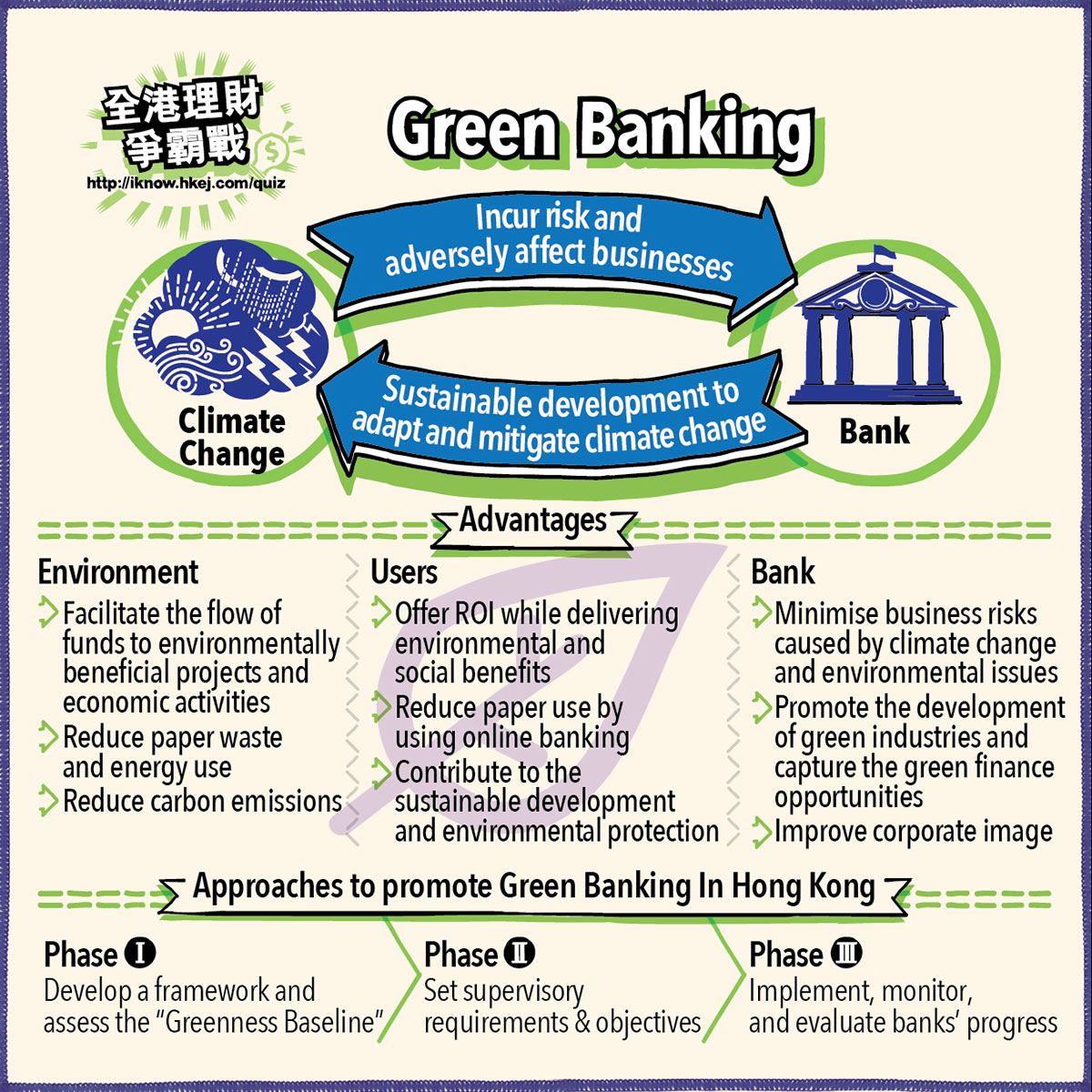
Climate change is one of the major risks threatening the well-being of mankind. How the banking and financial system operates will have an impact on how climate risk is managed or reduced.
Green banking therefore introduces concepts such as strengthening climate resilience, supporting a low-carbon transition, reducing environmental pollution, and paying attention to social responsibility in the business and daily operation of banks, to make the development of the banking and financial system more sustainable.
In the operation of the banking business, in addition to optimising performance, it is crucial to create sustainable development. In fact, banks' business operations and returns may suffer from extreme weather and low-carbon transitions arising from climate change.
Taking ESG into consideration has become an emerging trend of decision-making for stakeholders such as customers and investors. Incorporating ESG elements into the banking business operation is beneficial to its long-term interests and promotes sustainable development.
The HKMA adopts a three-phased approach in promoting green and sustainable banking in Hong Kong. They include develop and assess the greenness baseline; set supervisory requirements, and implement, monitor, and evaluate banks’ progress after targets are set by banks.
Green banking is an emerging concept, and the development of green banking has faced a number of challenges, including non-standardised definitions of green economic activities, and the emergence of “Greenwashing” marketing practices, where companies focus on promoting their green image via advertising and marketing rather than taking measures to reduce environmental impact.
To reduce the risk of greenwashing, China and the European Union (“EU”) have jointly developed a Common Ground Taxonomy to help define activities that make a significant contribution to climate change. Local financial regulators will aim to refer to the Common Ground Taxonomy that classifies economic activities that are considered environmentally sustainable, and this will help boost user and investor confidence in green services and products.
After learning about different green financial products and enterprises, Little Thrifty hopes to support green finance and sustainable development in his daily life apart from investing. As a consumer of financial and banking services, Little Thrifty uses online banking to manage his finances and takes the extra step of applying for e-Statements to reduce the use of paper statements. This act not only can reduce the use of paper but also save energy consumption in postage and transportation, thus promoting green and sustainable development.